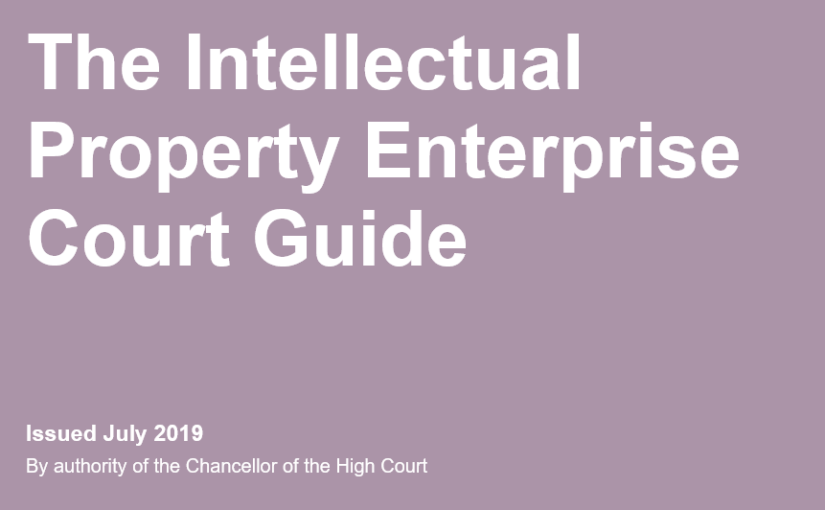The new users’ guide for the Intellectual Property Enterprise Court (IPEC) is now available. Below is a brief summary of some key changes of which practitioners should be aware.
Contents of Statements of Case:
The new guide contains cautionary guidance on the contents of statements of case. The IPEC guide has always stated that pleadings “must set out concisely all the facts and arguments upon which the party serving the statement relies.” The Guide now adds:
“This is sometimes misunderstood. All relevant facts and arguments must be stated. But they should not be set out in a manner which includes every detail. There will be an opportunity by the time of the trial to explain to the court everything that matters. A good approach is to make the statement of case as concise as is possible, while considering whether any argument proposed to be run at trial and the basis for it will come as a surprise to an opponent who has read the statement of case. If not, the statement of case has probably been drafted in sufficient detail.”
The required contents of statements of case for different IP rights are also expanded upon as follows:
- Patents – Allegations of insufficiency have to state which aspects of the invention cannot be made to work; statements of case responding to invalidity must set out independently valid claims; and importantly, each party must state what they believe to be the inventive concept of each patent claim in issue.
- Registered Designs – Prior designs must be specified in the pleadings along with how they became public; parties should consider how the “typicality” of representative prior art might be proved at trial.
- Unregistered design right proceedings – A maximum of five designs may be relied upon; diagrams may be essential; significant features of each design should be identified by the claimant in a list, and the defendant should plead back to each feature; one item of prior art should be used to support an allegation of lack of originality, with each significant feature identified; commonplace designs should be set out likewise by reference to the significant features in each prior design; exclusions must also be identified.
Jurisdiction & Allocation:
- There is further emphasis in the new guide on where cases should be brought, both within the IPEC (small claims / multi track) and in relation to IPEC or elsewhere in the High Court (see new section 3.2). In that new section the court places additional emphasis on inequal financial resources between the parties as a “strong (though not overriding)” reason to have a case heard in the IPEC.
- Section 3.2 also places the onus on the party bringing the claim to “tailor their case” to ensure the proceedings can be dealt with in two (or at most three) days.
- In section 3.3 the Court now emphasises that the small claims track upper limit of £10,000 “does not constitute a hard and fast ceiling” and that the small claims track is entitled to order compensation above that amount.
Other points:
- The guide has explicitly added the ongoing obligation to disclose known adverse documents within the meaning of paragraph 2 of PD 51U (Hacon HHJ had recently been putting this in the Order for Directions following the CMC); and
- Parties are nevertheless reminded the new disclosure pilot scheme does not apply in IPEC.
- One more general change in the document seems to be that it is intended to be more approachable for litigants in person (and hopefully therefore to make the process of running cases brought by litigants in person less onerous on the Court). Some of the consequent amendments include:
- the IPEC’s small claims track offering is emphasised further;
- application of the civil procedure rules is also highlighted and relevant passages (from areas such as the practice direction on pre-action conduct) are set out in the guide itself and explained further; and
- issues for consideration prior to, and at, the CMC are set out more clearly.
